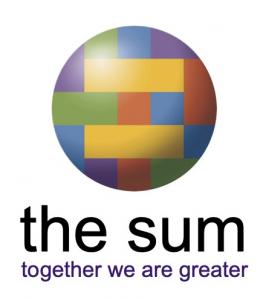The Power of Difference Assessment Validated by University Study
Is the Sum’s Groundbreaking Measure the Next Evolution of DEI?
CHARLOTTESVILLE, VIRGINIA, USA, September 8, 2022 /EINPresswire.com/ -- Unconscious patterns related to seven differences: race, culture, gender, sexual orientation, disability, class, and religion, can now be reliably measured by the Power of Difference Assessment (PDA). Charlottesville nonprofit, The Sum, developed the assessment which was recently studied by a team of researchers from North Carolina State University led by Dr. Christy Byrd. The team found the PDA to be a psychometrically sound, reliable, and valid measure with an innovative, asset-based lens that clarifies learning edges and recommendations. They concluded, “Educators, diversity trainers, and others can confidently use the PDA to assess and support cultural competence for individuals and organizations across a spectrum of fields.”
What the Assessment Measures
The PDA measures three primary patterns of thinking, feeling, and behavior, described by the Power of Difference Model (PDM). The model’s terms for these patterns are Sensitivity, Oneness, and Strength and each one has both assets and limitations.
Sensitivity
Those in Sensitivity value differences but tend to get “frozen” by an over-focus on political correctness. In this pattern, one’s personal meaning comes from working to change systems and people, but this outward focus can also be used to patronize others and avoid one’s own internal development.
Oneness
Those in Oneness see and appreciate that we are all part of “one human family” and this focus is the primary source of meaning. In this pursuit they may devalue difference and avoid hard conversations about difference and thereby inadvertently reproduce systemic pressure to assimilate to the dominant norm.
Strength
Those in Strength value courage, loyalty, and a willingness to sacrifice for the group. In their desire for meaning they cast themselves as “good” and others as “bad” and from this worldview they desire to win, dominate, and be superior at all costs. Those in this pattern tend to evaluate differences.
More detailed descriptions of these patterns can be found on The Sum’s website: www.thesum.org.
The Power of Difference Model offers insight for individuals' internal learning and also describes dynamics that occur within families, classrooms, organizations, institutions, and society as a whole (consider how these patterns play out politically, for example). When individuals operate according to one primary pattern (often learned in childhood), they conflict with the other two. They tend to seek information that legitimizes their primary pattern and de-legitimizes the other two. This creates an endless stand-off or dysfunctional homeostasis both within us and in our groups and systems.
Integrating All Three Patterns
The Sum's work suggests that, with individualized support, people naturally integrate the assets of all three patterns internally, becoming a catalyst for change in relationships and in organizations. They report:
• greater effectiveness across difference
• less burnout and overwhelm related to issues of diversity, equity, and inclusion (DEI)
• recognition of their own privilege and how to use it effectively
• impacting others, generally, as intended across differences
• a sense of solidarity across differences
• pride without prejudice
• an ability to “refuse both silence and violence”
• courage to withdraw participation in violent aspects of systems
• capacity to catalyze meaningful systemic change without effort
• greater internal stability: less rising and falling on external conditions
• experiencing greater personal clarity, mission, and fulfillment
• an ability to hold others accountable without blame or shame
Supporting people and organizations in this internal integration process is the mission of The Sum. J. Elliott Butler-Cisneros, The Sum’s Executive Director and Founder says of the assessment and model, “I’m always learning that whatever we’re called to do, whatever our field, our capacity increases exponentially the more we learn to live from solidarity across our differences.”
Download the full study from North Carolina State University HERE. Take the PDA or arrange a group administration at www.thesum.org. Try the free Race Pattern Quiz while you’re there. Key organizational leaders can take the PDA for free (sliding-scale is also available).
The Sum is a nonprofit founded in 2006 by J. Elliott Butler-Cisneros. Operations were moved to Charlottesville after the August, 2017 “Unite the Right Rally” when James Fields drove his car into a crowd of protestors, killing Heather Heyer and injuring over 40 others. Visit www.thesum.org for more details.
J. Elliott Butler-Cisneros
The Sum
+1 434-260-9377
info@thesum.org
Visit us on social media:
Facebook
Twitter
LinkedIn
Other
Legal Disclaimer:
EIN Presswire provides this news content "as is" without warranty of any kind. We do not accept any responsibility or liability for the accuracy, content, images, videos, licenses, completeness, legality, or reliability of the information contained in this article. If you have any complaints or copyright issues related to this article, kindly contact the author above.

